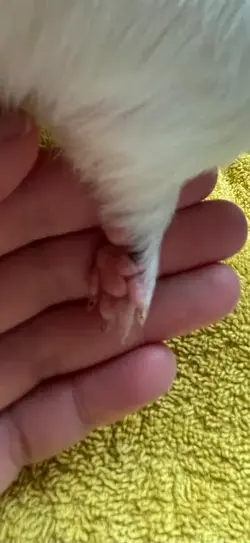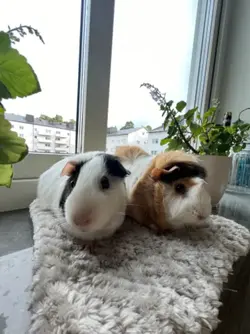Hi and welcome
It is great that you are taking these poor souls in and are giving them a good home.

Are the hard areas on the sides of the soles or in the middle of the soles?
Spurs are growths of dead skin that develop on the sides of pads where no weight is on them.
Bumblefoot (pododermatitis) scabs are in the middle of the pads where the weight is fully on them. They can bleed heavily when they come off.
Calluses can form on the sides of the back feet, more commonly as the result of overlong nails diverting the weight distribution to the sides of the back foot soles.
Guinea Lynx :: Guinea Pig Feet and Foot Problems
Guinea Lynx :: Pododermatitis
However, without pictures we haven't got enough information to comment.
I strongly second having any neglected and malnourished piggies vet checked.
As to a diet. Please follow our diet recommendations. Quality comes over quantity - what you want to achieve is health from the inside out and not stacking on empty calories that go on as fast as they come off. Guinea pigs have a faster metabolism so they will catch up much more quickly.
1 The recommended ratio of food groups
2 Hay and fresh grass
3 Vegetables, fresh herbs and fruit with an illustrated balanced sample diet
4 Special dietary needs
- Urinary tract infections, bladder stones and sterile IC (non-bacterial interstitial cystitis)
- Diabetes and long term digestive problems
- Impaction in boars
- Pregnancy and nursing dietary tweaks (only visible to registered members who have accepted our no intentional breeding policy)...
What I would however recommend is to feed two tablespoons of alfalfa based pellets before you switch to ideally a daily tablespoon of hay based pellets for the long term, just for the initial boost of extra protein. Or 1 tablespoon of hay based pellets and a handful of alfalfa hay daily in addition to the normal hay for the first month, no longer. You can find links to different hays and pellet brands via the diet guide.
You can also discuss with your vet a 2-3 weeks vitamin C booster - not longer or the body will accustom to the higher levels and react with scurvy symptoms as soon as the level drop suddenly. By that time, nutrients will start filtering through. Brace for the odd week of sudden high weight gain of up to 50g once the reservoirs are filled.
I have adopted several piggies from a bad neglect background and can assure you that it is patience, persistence and a good normal diet that will win out in the long term. Neglect piggies have until about 24 months of age to make up for lost ground to a degree in growth as well as weight so there is likely still plenty of time for yours to catch up.
The good normal diet will boost their immune system for the long term and - unless there are major issues - they still have a good chance at living a normal or even longer life span, as I know from my own. I have had fair number of them living to 6-8 years despite their bad start and not rarely beating their normal companions because they are survivors and have the will to live.

Please also take the time to read this link here, which you may find very helpful. Checking around ribs for the cavy BMI will tell you when they have reached their optimum. The guide explains how all the different health and weight monitoring measures work and what each can contribute and what not, including weighing and checking for the BMI.
1 Weight and Weight Loss
- Why regular weight monitoring matters
- How weight changes over a lifetime
- How to weigh on your kitchen scales (with video)
- The weight loss rules
- How critical is the weight loss for my piggy?
- Possible causes for weight loss
2 Body Mass Index (BMI) or 'Heft'
- Why is understanding your piggy's weight so important?
- 'Average' weight vs. individual weight - the big trip up
- How to check for the BMI...
We offer a courtesy second opinion sexing service for new guinea pigs.
1 How to Sex a Guinea Pig
- When do I need to check the sex?
- How do I make sure that I have got the gender 100% right?
- What are the secondary areas that require a hands-on check?
(Nipples - Penis ridge - Testicles & Castration - Slit: What to check in sows and in boars)
2 How to Sex Babies after Birth and at Separation Age
- Newborn boar and sow (genitals)
- 2 weeks old boar and sow (genitals and slit)
3...
PS: You may find this very practical information collection helpful into which nearly 20 years of collective forum experience with literally hundreds of thousands of questions have gone. We recommend bookmarking the link:
Contents Overview
1 What This Collection Is About
2 Guinea Pigs as Pets
- Family and Classroom Pets
- Sourcing Your Guinea Pigs, Common Pitfalls and Your Customer Rights
- Pet Owners with Anxiety: Practical Tips for Sufferers and Supporters
- Naming your Guinea Pigs and Finding Out the Breed
- Guinea Pigs as a Species: Facts, Development and Social Aspects
3 Living Environment
- Housing (with sourcing tips)...



